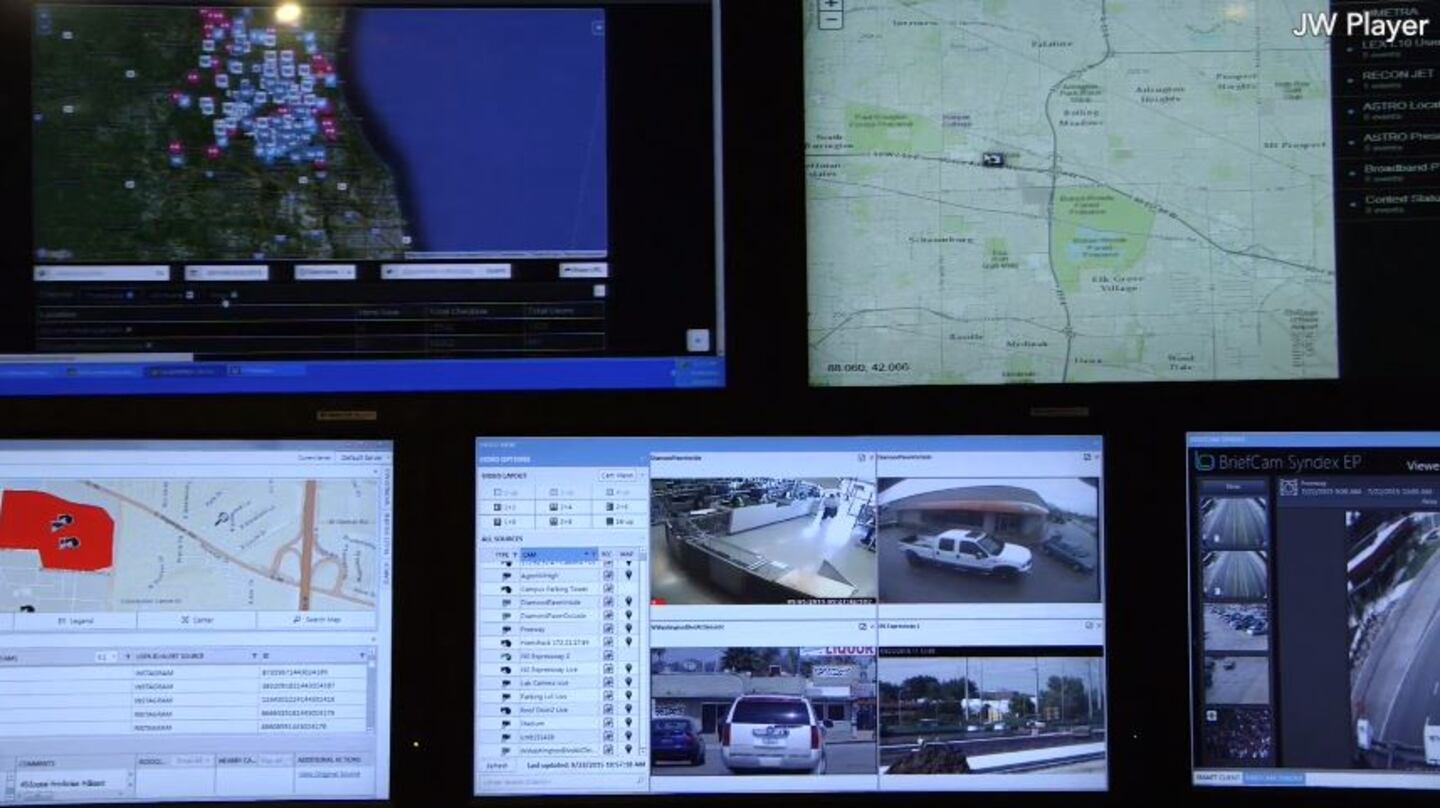Jacksonville, FL — Jacksonville’s Sheriff and Mayor have increasingly been promoting “intelligence-led” police policies, and the proposed new Real-Time Crime Center is being offered as a platform to bring that strategy to the next level.
We first told you when Jacksonville Mayor Lenny Curry put forward his $1.2 billion City budget proposal, that it included funding for a Real-Time Crime Center. Details were initially scarce on what exactly that program would look like, though.
A preliminary investigation by WOKV started to shed some light, but we've now obtained the full proposal for this pilot program, to paint a clearer picture.
Program goals
The proposal shows the heart of this project is bringing together existing public safety systems- like the gunshot detection system ShotSpotter and JSO’s Computer Aided Dispatch- and feeding them in to a single system, which can be efficiently viewed and filtered. That system is called CommandCentral Aware.
Motorola Solutions first proposed this program in April, and the letter they sent to the City shows the pilot is built around four key concepts- breaking down data silos by aggregating data in to a single platform, deriving intelligence in real time by providing first responders with situational information, maximizing technology investments by leveraging City investments, and streamlining workflows through an adaptable platform.
With data aggregation, the unified CommandCentral Aware platform- which is the cornerstone of the RTCC- is fed by any number of streams of information. That data can then be mapped around the event taking place, giving a comprehensive look at what is known about the history of crime at a scene, available resources near the area, information from emergency dispatches, and more.
This plays in to the second goal, of providing real time intelligence to first responders. The analysts using this system would be able to feed all of the unified data they get to the emergency responders heading to a scene, giving them a more comprehensive idea of what type of situation they are walking in to. This could increase their safety, and that of people in the area of a crime, according to the proposal.
Some of the data comes from sources the City has already invested in, which speaks to the third goal. The City of Jacksonville and Jacksonville Sheriff's Office already have the ShotSpotter system, which alerts police when gunshots are detected. JSO has previously indicated this could also work in coordination with their use of the National Integrated Ballistic Information Network, although there is no direct mention of that in the pilot program proposal.
Finally, on streamlining workflow, the system has the ability to add more features and adapt to workflows already in effect, according to the proposal letter.
The pilot proposal pitches this as a “next generation public safety solution” for an intelligence-driven police approach. That approach is something that Curry and Sheriff Mike Williams have promoted, as they have brought more of these intelligence-driven systems online.
CommandCentral Aware is also envisioned as a force multiplier, by integrating systems and, therefore, more effectively using existing staff and resources. Additionally, it’s believed this would let police continue to shift from reactionary responses to a more proactive position, by tracking trends.
Features
To feed CommandCentral Aware, a specialized video surveillance system is being provided at 15 sites for the duration of this pilot. The program proposal says these sites were prioritized by the City. While WOKV has obtained a list of the sites, we are withholding naming the locations, at the request of JSO.
“The goal of this center is to provide a safe environment for our community by adding some technology in helping us reduce crime,” says a statement from JSO.
The video system specifically runs a program that lets analysts filter by time, object size, color, and similar criteria to find relevant video. Video is analyzed and sorted as it’s ingested, so that when the analyst searches for something, relevant objects and backgrounds are pulled up. The analyst can then select their object of interest, and the system will call back to the original video. The search function allows you to look for a specific object, or search by general traits or similar descriptions. This can be used to potentially isolate people or vehicles matching suspect descriptions, and can search hours of video in just minutes, as an example.
The pilot program proposal says private, business surveillance can also be integrated in to the system, if police are given access. WOKV has previously reported that Curry is also aiming to revamp the City's security camera network, and that could potentially feed in to this platform in the future, as well. During a Thursday budget hearing by the City Council Finance Committee, Williams said they hope to add more camera coverage in the future, with an emphasis on parks, entertainment areas, and locations that have ShotSpotter.
Additionally, the program details say this pilot serves as a framework for future growth, which could mean additional cameras, more video integration, enhanced data analytics, and community engagement tools.
Budget and next steps
The “Proof of Concept” agreement for this program, obtained by WOKV, shows Motorola Solutions first proposed the use of this “Intelligence-Led Public Safety solution” to the City in early April. At the time, it was pitched as a six-month pilot program. Instead, the City has committed to a three-month pilot. JSO says they determined that would be enough time to decide whether they wanted to pursue this program full time.
“JSO has done an extensive search and explored many systems from different cities and the Motorola platform is the best fit for our city,” says a statement from JSO to WOKV.
Once the CommandCentral Aware program is up and running, the countdown on the pilot begins. The “Proof of Concept” agreement was signed on July 23rd, and the proposal estimates six to eight weeks to implement the pilot.
The pilot program is no cost to the City, specifically for the equipment. There are a range of IT costs to support the system, though, as well as some desk space and minor furniture needs. JSO says the initial year budget is $1.625 million, plus $283,523 in salaries for four safety analysts. The Mayor’s budget proposal shows those costs are spread across several IT subfunds, as well as in JSO’s budget.
If the City decides to continue past the pilot phase, they would have to buy the equipment from Motorola Solutions. JSO says their budget request for this upcoming fiscal year already includes the assumed purchase of that equipment.
JSO is already working on standing up the no-cost pilot, and- if Curry’s budget is approved- could move to what they consider “phase one”, which is adding workstations and cameras after the pilot. If that is successful, “phase two” would follow, which would be an additional cameras expansion and software support. Phase two would start next fiscal year and last two to five years, according to a statement from JSO to WOKV.
Jacksonville’s City Council Finance Committee reviewed JSO’s portion of the Mayor’s budget proposal on Thursday, during which Williams briefly addressed the RTCC, among other things. This is part of several weeks of budget hearings, which leads to the full City Council approving a budget before the start of the next fiscal year, October 1st.
WOKV will continue to work through the proposed City budget, to determine how your tax dollars are being spent.











